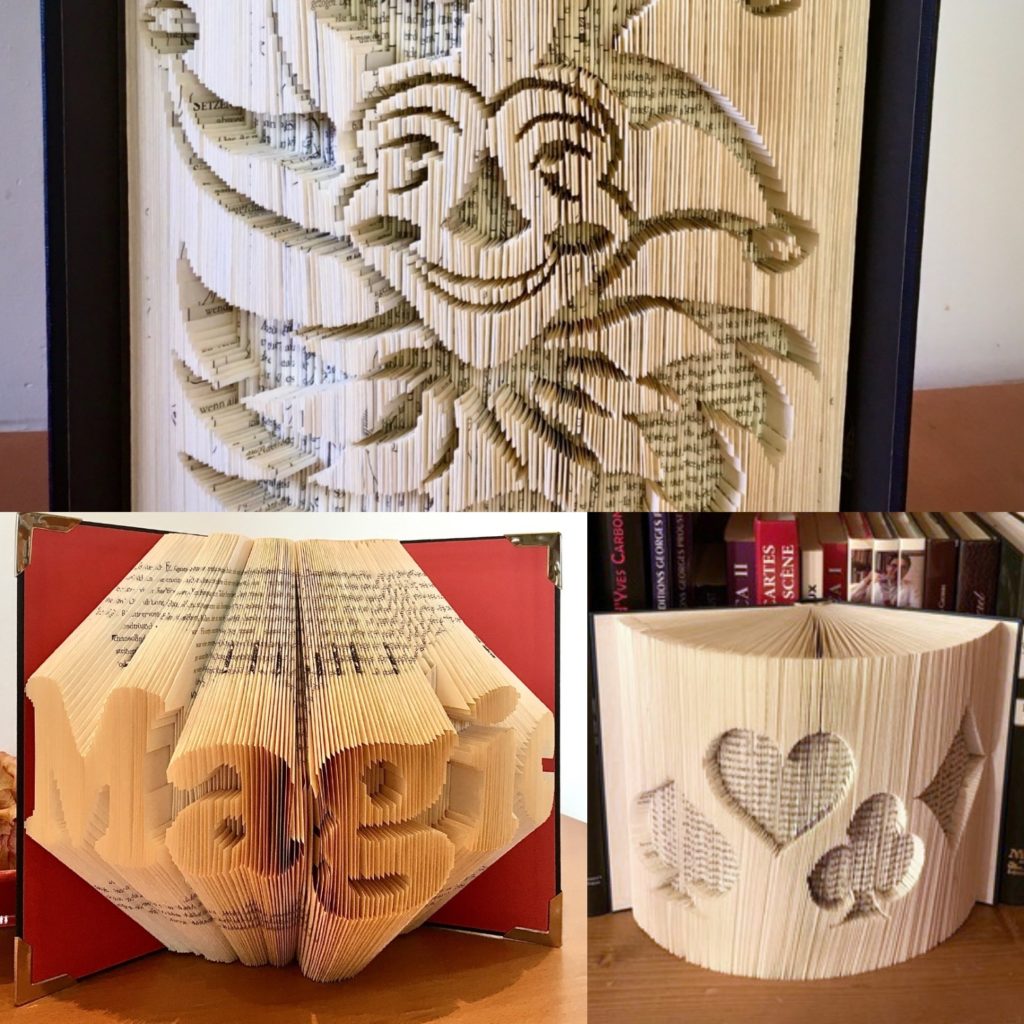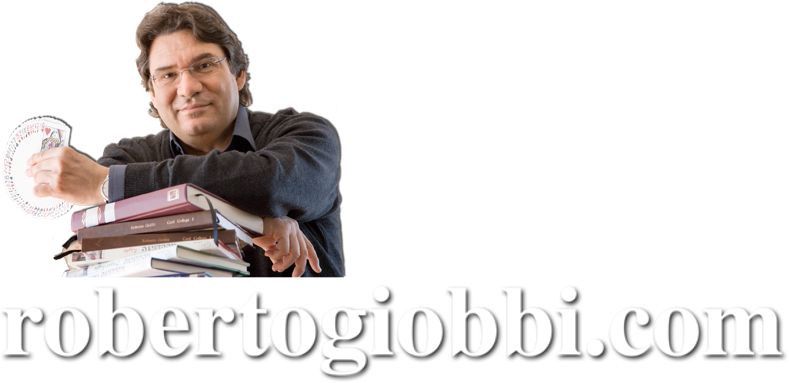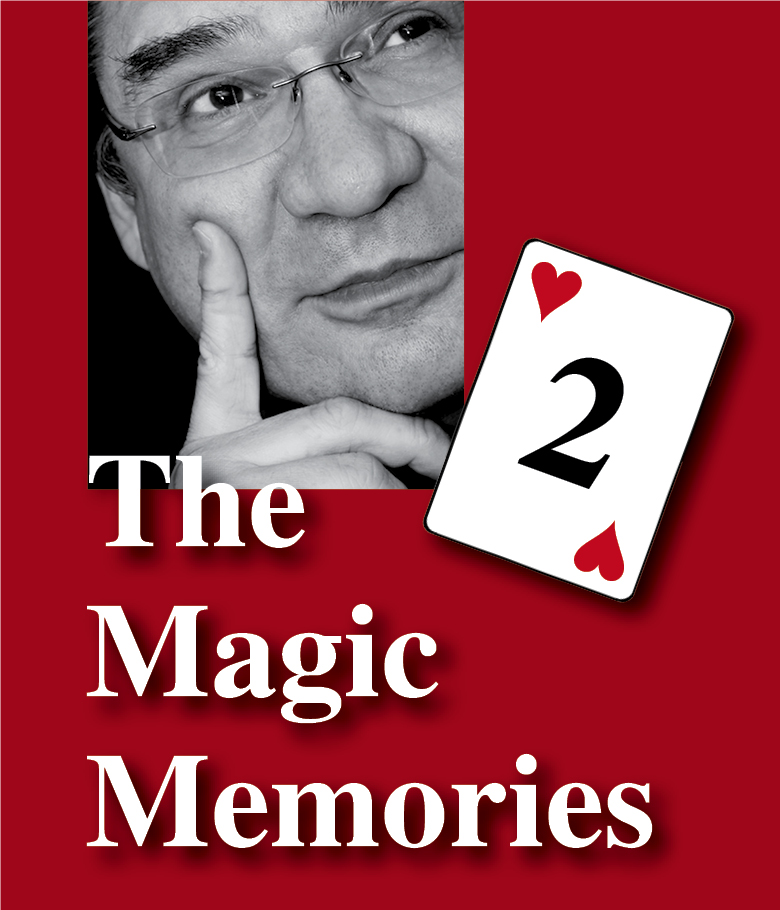
Dear all!
Plans were to be in Italy, France and the USA in these days, with shows, masterclass and a few lectures. But, alas, I’m home like most of you. At least I hope this finds you and your families healthy. We are fine, privileged to live in a house with a little garden, good weather, and two libraries (yes, two!) with over 6’000 books magical and otherwise, so there is not one second of boredom.
Therefore, here is an «Unexpected Secret Newsletter» (with nod to Marlo).
IMPORTANT NOTICE: Due to the extraordinary situation in the world and especially in Europe, the borders between Switzerland and Germany have been temporarily closed. I usually ship all book orders from Germany as their rates are much cheaper. I won’t be able to do so until they reopen the borders. This affects all books orders, not DVDs, as I can ship those as letters from Switzerland. And of course all downloads are fine. If you have any questions, please send me an email at giobbi@bluewin.ch and I’ll answer within 24 hours.
Subscribe to Secret Newsletter and browse the previous email at https://www.robertogiobbi.com/site/newsletter-archive/
On to this month’s topic:
Ask Roberto:
I checked Card College 1 and Lesson 18 of Card College 1&2 – Personal Instruction (the video pendant to CC 1&2) which both treat the subject, and, shame on me, I did not discuss these problems. So here are a few solutions to the problem. I suggest you follow along with cards in hands, and you will understand and learn (a universal principle).
Problem 1: The target card to be culled is at or near the face of the deck.
Solutions to problem 1: You’re holding the deck face down in dealing position and plan to cull one or several cards. Turn the deck with the faces towards yourself, but in such a way that the spectators cannot see the face-card. This is just in case the target card happens to be on the face of the deck and you did not want them to see it. (Obviously this depends from the context of the trick, for context is always king.) If the order of the rest of the deck can be upset, casually turn the deck again face down as you converse with the audience, and then give it a brief Overhand Shuffle (see details of handling of how to shuffle the bottom card to the top artistically on p. 253 of Card College Volume 2). If the order of the remaining cards must be retained, use a Transfer Cut (chapter 6 in CC1) to achieve the same result.
If the target card is at position 2 from the face, you may either use the same approach as above, i.e. transfer cut it to the top, or try this, and you’ll be surprised how well it works: Start spreading the cards between the hands as you would for the regular Cull. As soon as the right hand has received the first two cards, the fingers of the right hand pull the 2nd card from the face to the right. Less than half an inch is necessary for the 3rd card and all those following to be fed between the 1st and 2nd card. Smoothly continue spreading cards. This move takes merely an instant, and if you look up and make a humorous or otherwise interesting remark (always relevant, of course, to the trick), the action will be invisibilized. But even if they watched, there would be little to see, since they usually don’t know what is coming and therefore what to look for. That’s called selective perception, and is one of our big friends in the toolbox of deception.
If the target card is at positions 3, 4, 5 etc. from the face, use the exact procedure as for the regular Cull. Try it with the card at position 3 from the faces and do it slowly until you understand and learn (this is another universal strategy of learning). You will notice that the first two cards, if kept spread by the right hand, will afford sufficient cover for the culling of the 3rd card, le alone for those following.
Problem 2: Several target cards are together or close to each other. This assumes that you want to cull e.g. four-of-a-kind, or even a complete suit.
Solution to problem 2: There are various cases that allow for various solutions.
Case1: You start spreading and arrive at two or even three target cards lying together. In this case the best approach is to close the spread, obtaining a break behind the target cards with the little finger, and then casually cut or shuffle them to the back. Now start anew and cull the remaining target card(s).
Case 2: You start spreading, cull one or several target cards individually, and then hit on a group of two or more target cards together. If these happen to be the last cards you want to cull, do as above, i.e. close the spread obtaining a break behind the target cards with the little finger, and then casually cut or shuffle them to the back.
Case 3: You start spreading, cull one or several target cards individually, and then hit on a group of two or more target cards together, but there are more cards after that group which you want to cull. Follow along, doing each action slowly at first, so your fingers understand: cull the first card of the group in the regular way as you extend the spread. When you collapse the spread again slightly, as you would to continue spreading, treat the next target card in exactly the same way as you did with the card you just culled, i.e. simply cull it, too. And then do the same with the next card. You’ll notice that this is as easy as pie, and the only “block” you had was a mental one, the fingers can do it. Once you’ve culled the target cards, continue the spread, and then cull any remaining cards, individually or together as you did up to here. Done.
I believe that you now have all the information necessary to solve any type of problem you may run into when using the Cull. And please keep in mind, “Before you practice, understand, but once you’ve understood, practice.”
You can send in your own question, and I’ll try to answer it at some point. You can always write to me at giobbi@bluewin.ch, but please do not be offended, if I do not answer, as I get many requests. But I always read you emails (unless I don’t receive them…). Meanwhile let me remind you that I have answered 52 questions in Ask Roberto, available both as an e-book and a printed book. I recommend the e-book, which is very comfortable to read on a tablet, one question a week, for a full year. Click here to see the table of content. Also remember that you can take coaching lessons via Skype (see below).
Reading Recommendations
Let’s start with a few reading recommendations. How to Read a Book – The Classic Guide to Intelligent Reading by Adler & Van Doren is just what the title promises, brilliant, but 425 pages long. For a quicker and easier read I have eight (!) essays in my (e)-book Ask Roberto that examine the subject from various points of view (the essays are: “4. How to Study”, “13. Creative Process”, “19. Effect Categories”, “23. Practice”, “25. Starting With Card Magic”, “37. “Navigate Info – How to Read Erdnase”, “39. Notebook & Journal”, “40. Repertoire Books”). Secret Agenda and Hidden Agenda have various days devoted to taxonomy and terminology, two important factors that show you how to tag the notes so you can easily find them again. There you will also find plenty of entries that deal with how to make intelligent notes and how to learn quickly and effectively. No more hints, go through the books again, you won’t regret it. Last but not least I’d like to mention Andi Gladwin’s Focusing on Magic, number 6 in the series of “Astonishing Essays” by Vanishing Inc.
Paper & Electronic Notes
You can take notes on paper or with an app. Important: one doesn’t exclude the other – use both! We will discuss electronic note-taking in one of the upcoming parts of this series. For now here a few suggestions for taking paper-notes.
Taking Notes on Paper
Although years ago I switched to mostly taking notes with Evernote app, I also have two dozen paper notebooks, some of them several hundred pages thick, which I wrote in the past 40 plus years, and which I’m still using. I only wear shirts with a breast pocket that always has a small pen in it and one of those mini-notebooks you find everywhere to fit. For short notes I prefer these to the smartphone; I then transfer the notes as soon as possible to a larger paper notebook or to Evernote. The photo below shows two such notebooks (ca. 6.5 x 10.5 cm).



Additional Information
Back Issues of Secret Newsletter
Interview With Roberto Giobbi
Wer deutsch versteht, findet hier den zweiten Teil eines Interviews, das Semjon Sidanov mit mir geführt hat und das etlichen Usern seines YouTube-Kanals gut gefallen hat. HIER GEHT’S ZUM INTERVIEW.
Want a book signed to you personally?
Personal Coaching Live or via Skype
If you are interested to receive personal advice on anything related to your magic, or if you merely want to ask me questions or chat with me, you can take personal coaching lessons at my studio in Muttenz, Switzerland, or via FaceTime/Skype. It is $ 150 for 75 minutes, so, cheaper than a pimp, and I would bet with better results 🙂 For details contact me HERE.
TCC Chop Cup
TCC is my publisher in China, and we have already seven books together out there, which I’m told are quite successful. They will also soon release the Card College Playing Cards I’ve mentioned before through Kickstarter, and I’ll let you know as soon as this happens. Meanwhile, if you are interested to obtain a fine hand-made leather Chop Cup at an amazing price, klick here. When I did a one-month-tour in China in OCT of last year, I had a chance to visit their premises in Shenzhen and can assure you that they create and produce some of the finest props in the industry, and their business behavior and ethics are top-notch.
The Missing Link
Under this heading I propose one unusual web-link, which you’ll hopefully find inspiring, and if nothing else simply amusing. This one is about “Anamorphic Art Installations” by Michael Murphy, and it is a perfect metaphor for reframing, i.e. experiencing something in a completely different way if we look at it and approach it from a different angle: https://www.youtube.com/watch?v=SKfpYVK_r0E
With a mini-projector and an empty wall or similar, you can show the clip, and then use it as a Prologue and presentational idea for a trick. This is just one of the many practical suggestions you’ll find in the Agenda books; for details on this particular idea see the entry “Film Clip Prologue” for February 20 in my Hidden Agenda – to a performing magician, this alone is worth many times the price of the book.
Let your friends know, please
If you believe that this newsletter (and those before) could be of interest to your friends, please forward this Secret Letter to them. To get it directly, they simply have to want to sign up for it HERE, where they can also download previous issues.
More on the next occasion, there are several questions of yours waiting to be answered – take care of yourself AND the others!

Roberto Giobbi

